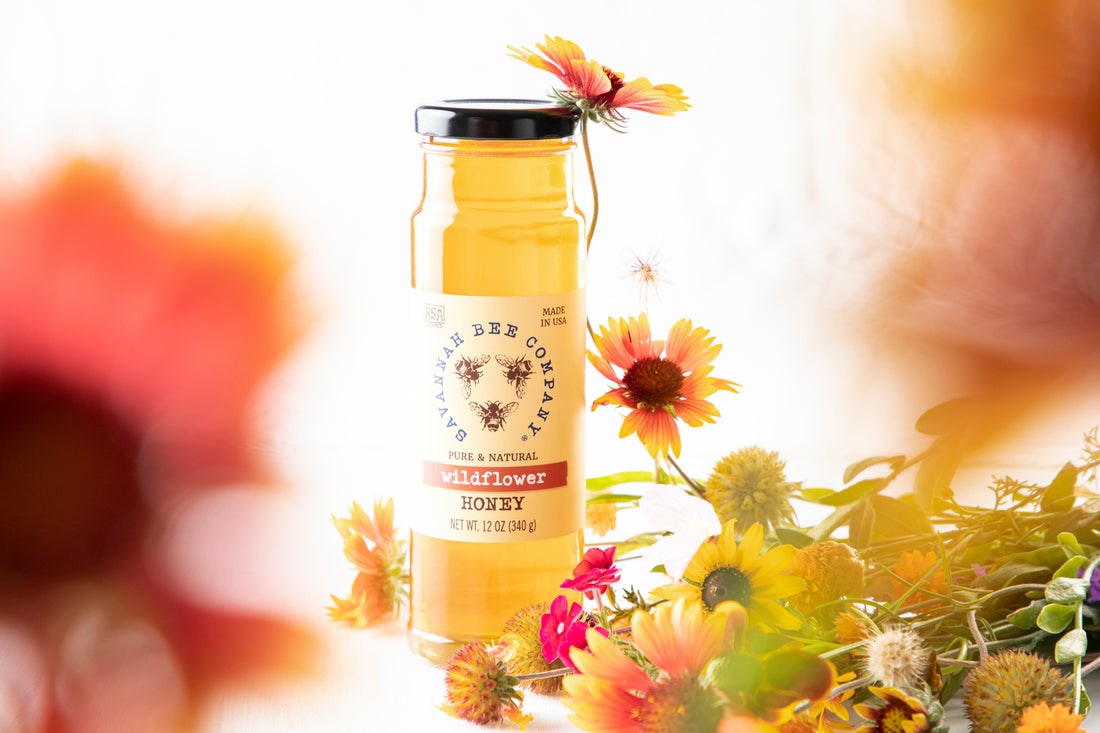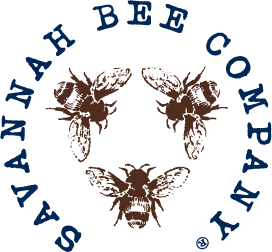The Many Faces of Wildflower Honey

Wildflower honey is something that everyone has probably seen, but most do not really understand. Everyone knows that wildflower honey is honey, produced from the nectar, that the bees have gathered from multiple flower sources or varieties. Everyone has seen it in the grocery store and at the local farmers market. It is so much more than that, though. Wildflower honey is a taste which reflects a specific part of the world during a specific time. An edible tribute to the small section of the planet that the wildflower honey comes from! It is a flavor representation of a specific place in time and space.
Wildflower honey can be incredibly diverse in its color and flavor. There are conceivably infinite varieties of wildflower honey. Every year will be different than the last and it will never taste the same two seasons in a row. Flavor and color can even vary from one backyard to the next! Savannah Bee Company’s Wildflower Honey, Savannah Honey, and Charleston Honeys showcase this every new honey year and we ook forward to the new batches as they show up in drums loaded into our warehouse from apiaries all over the southeast.
Honey bees practice a trait known as constancy. You may also hear it called “floral fidelity” but either term means essentially the same thing. When scout bees come back to the hive and do their waggle dance to tell the other bees where they went, all of the other bees will follow their instructions to the letter. If possible, all the bees will continue to focus their pollination on the flower source described in the waggle dance. This is how monofloral honey is collected. Given that it takes almost 5 million flowers to produce one pint of honey, there is not always enough of a single species of flower for the bees to collect nectar from. When this happens, bees will collect what they can from multiple nectar sources from the surrounding areas, generally within about 6 miles from their hive. They still separate the nectar sources in the honeycomb, however, so it is possible to taste multiple types of honey from one frame on throughout one eehive . Wildflower honey is more common than monofloral honey because humans generally only plant agricultural crops in large fields of a single type, as opposed to flowers or flowering trees. Think about it, when was the last time you saw a giant field of nothing but Saw Palmetto for as far as your eyes could see?
Even if there are multiple types of honey in one honeycomb, this still isn’t Wildflower honey yet. It is still single sourced honey sectioned into the frame. Wildflower honey only happens when the frames are uncapped and spun either by hand or in a centrifuge and they blend together. As all of the separate honeys mix together, they become a true wildflower honey. Obviously, given the particular amounts of different honeys, the wildflower mix will taste different depending on what the bees pollinated the most that season. This is the reason we see so many crazy blends of wildflower honey from all around the planet. What grows in Savannah does not always grow in other parts of the world, and different seasons produce different flavors.
Savannah Bee Company’s Savannah Honey is sourced from flowers right around our headquarters. The flavor will change depending on the season and which flowers are currently in bloom. It is a true taste of Savannah, Georgia.
Charleston may only be about 80 miles up the road, but the difference in flavor can be dramatic. Our Charleston Honey tends to be much smokier in its taste than our Savannah Honey. Swamp Smiley atop a Wildflower hive in the good ol' days!
Last but certainly not least is our Wildflower Honey. Sourced from South Central Georgia, this is a truly amazing honey. Sometimes here at Savannah Bee we refer to our Georgia Wildflower Honey as the little sister of our signature Tupelo Honey. It's slightly darker than Tupelo but maintains a similar texture and viscosity, and tastes a wee bit sweeter. The flavor depends on the remote Georgia wildflower blossoms and the whimsy of the bees. It's the perfect "all-around" honey. We use this as our “anytime” honey because we have yet to find something that it does not pair well with.
We hope that you may have learned something from this post about why wildflower honey is not “just” wildflower honey.
#savethebees
Published

